- Location: Idaho, United States.
- Founded: 1970 by Tom Cade.
- Species: American Kestrel, Aplomado Falcon, California Condor, Crowned Eagle, and Peregrine Falcon.
What is The Peregrine Fund?
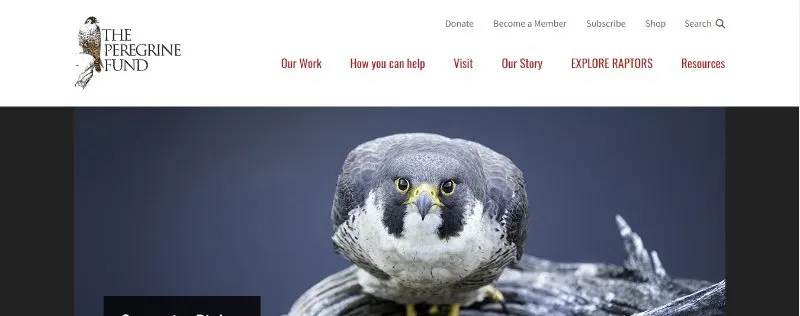
The Peregrine Fund is a non-profit organization with a mission to conserve and protect the world’s peregrine falcon populations. The Peregrine Fund is located in Boise, Idaho and it operates a number of facilities that help The Peregrine Fund with its work.
The foundation carries out its conservation work through scientific research, captive breeding programs, public education efforts, advocacy in support of sound environmental policy, and field conservation projects around the world.
The Peregrine Fund U.S. focuses on restoring wild populations in North America; The Peregrine Fund International works to safeguard peregrines worldwide; The Wallacean Initiative teams up with other organizations in Asia to hawk watch for illegal trafficking in native New World raptors.
See Related: Animals That Start With V
Where is the Peregrine Fund?
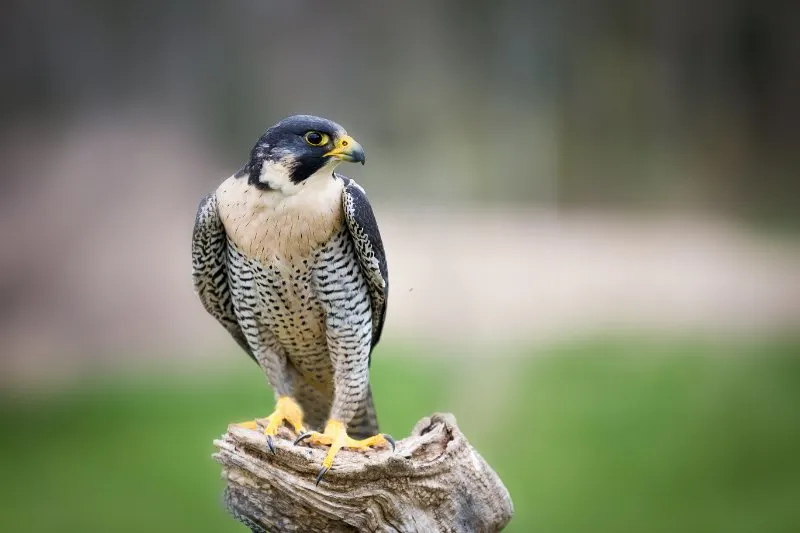
The Peregrine Fund is a private group located in Boise, Idaho that uses tailored solutions to conservation problems. The three main pillars of The Peregrine Fund’s work are breeding for broad-scale habitat restoration, research and science support, and monitoring the success of these efforts.
The Peregrine Fund has an extensive list of projects and partners across the globe, but The Peregrine Fund’s main focus is on birds of prey.
They work to conserve all wild birds and their habitats through three main program areas: The Northern Program (North America), The Neotropical Program (Latin America), and The Mediterranean Program (Europe, Asia, and the Middle East).
The Peregrine Fund has projects in 42 different countries around the world! The Peregrine Fund currently breeds 26 species of birds of prey and 5 other avian species.
See Related: Best Books on Endangered Species
The Peregrine Fund’s Mission
The Peregrine fund’s mission is to conserve peregrine falcons and conserve habitat in America. It was established in 1970 by a group of scientists and bird lovers disturbed by the population decline of North America’s most spectacular birds, the peregrine falcons.
It has achieved its objective: we have brought back to robust populations more than 1,000 pairs of peregrines and ten species relying on these aerial predators for protection against various raptors and shorebirds.
The Peregrine Fund is a hands-on organization that has never wavered from its mission: conserving America’s remarkable wildlife through research, land preservation or conservation easements or conserving habitat, advocacy for sound science-based management of raptors, and protection of critical wildlife habitats.
The organization’s most valuable contribution is its commitment to intensive, long-term research of peregrine falcons and the ecosystems they depend upon.
The Peregrine Fund has provided financial support for captive breeding, location monitoring, remote camera surveys, migration studies, winter roost surveys, and other research on peregrines and other falcons.
The Peregrine Fund’s research has contributed to the understanding of behavior, biology, and population dynamics as a part of its conservation efforts throughout their range including migration periods and wintering seasons.
See Related: War and Effect on Wildlife
Birds of prey under The Peregrine Fund
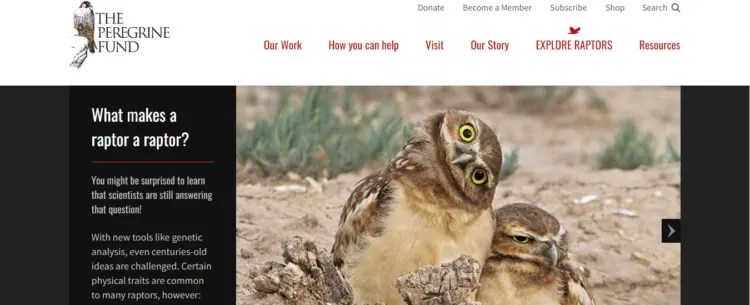
The Peregrine Fund has worked on conserving and providing sufficient protection for birds of prey for over four decades. The Peregrine Fund’s mission is to safeguard and conserve raptors,conserve habitat, and their habitats, while also educating the public about these incredible birds.
The birds under The Peregrine Fund’s care include Northern Goshawks, Tundra Swans, Florican, Prairie Falcons, Ferruginous Hawks, Golden Eagles, Red-tailed Hawks, Bald Eagles, Northern Harrier Hawks.
The largest facility is the World Center for Birds of Prey, where The Peregrine Fund breed bird through captive breeding and educates the public about birds of prey.
The other facilities include The Microwave Raptor Tracking Program, The Peregrine Fund’s International Conservation Programs, The Wilds, The Wild Animal Sanctuary, and The Raptor Conservancy of Virginia.
Check out this list of some birds under The Peregrine Fund.
See Related: Why Animals So Big in the Past?
American Kestrel
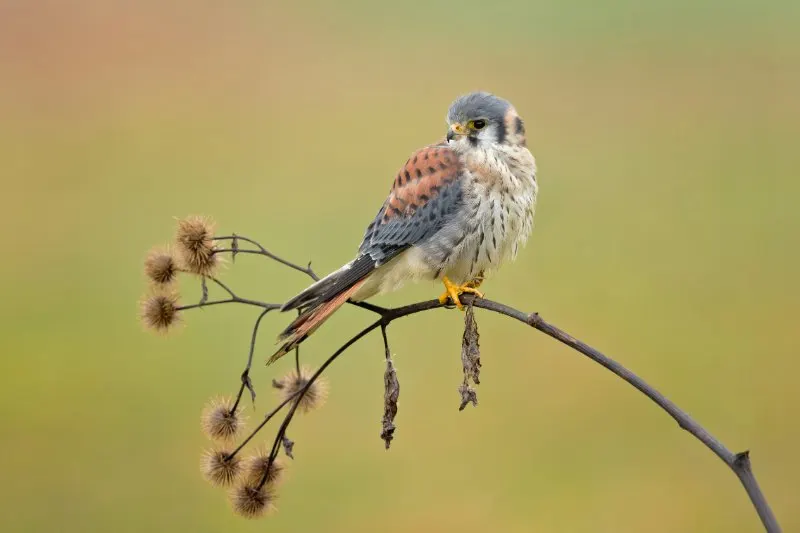
The American kestrel is a small falcon that belongs to the genus Falco.
The American kestrel is found throughout North America and into Central America in an area that goes from the Rocky Mountains and the Sierra Madre in the West and East, respectively, to parts of southern Canada and all of Mexico.
The American Kestrel has been able to survive in such a wide range due to adaptation. The adaptations make The Peregrine Fund successful and its conduct successful program.
The Peregrine Fund has been able to gain access to populations where breeding may not be possible otherwise by capturing adults and juveniles to release them back into their natural habitat.
See Related: Most Endangered Amphibians in The World
California Condor
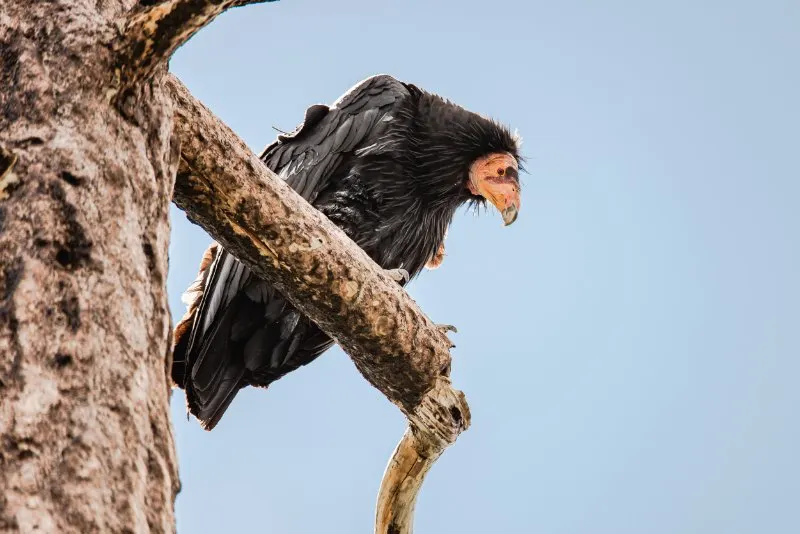
Status The California condor is the largest flying bird in North America. The wingspan can exceed nine feet. The maximum recorded weight of a wild California condor was 30 pounds, 6 ounces; That’s heavier than some small automobiles!
The condor nests primarily on inaccessible cliffs, under natural overhangs, or in caves. The eggs are incubated for about 28 days. The chicks remain in the nest for about six months and then follow their parents on flights, learning how to hunt.
See Related: Endangered Species in Florida
Peregrine Falcon
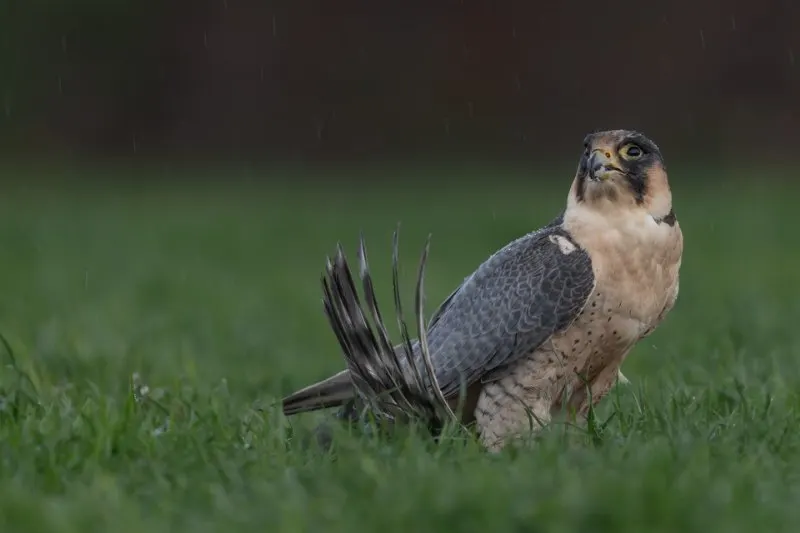
A Peregrine Falcon is a medium-sized bird of prey. It is noted for being the fastest animal on Earth, reaching speeds of over 300 km/h when driving during its hunting stoops
The bird of prey primarily hunts small birds, although it can kill larger prey, they typically nest on tall buildings or cliffs. The Peregrine Fetcon has a lifespan in the wild of up to one year the Peregrine Falcon has also been used in falconry.
See Related: Different Overfishing Solutions for Conservation
Projects
The Peregrine Fund was founded to restore the Peregrine. The efforts made by the fund were successful, and it saw the Peregrine removed from the U.S. Endangered Species List in 1999. Their focus has then expanded to include more than 100 bird species in 65 countries.
The Peregrine Fund aims to protect birds worldwide through research, captive breeding programs, conserving habitats, and education.
- The Peregrine Fund uses drones to track peregrines
- The Peregrine Fund works to sustain viable populations of Peregrines and other bird species
- The Peregrine Fund does Audubon’s annual Christmas Bird Count in Hawaii
- The Peregrine Fund helps fund citizen science projects with Audubon and NatureWatch
- The Peregrine Fund helps monitor penguins in Galapagos
- The Peregrine Fund helped develop a peregrine detection dog for the USFWS.
- The Peregrine Fund conducts scientific research
- The Peregrine Fund helps endangered species
- The Peregrine Fund works for cooperative efforts involving individuals for conservation aside from aiming to restore rare species
The organization also documents birds of prey injuries and deaths, and raises awareness for local conservation and various conservation efforts for these species.
The Peregrine Fund also offers a variety of volunteer opportunities for those interested and always looking for help with their citizen science projects. The organization also works with the World Center for Birds of Prey to help endangered birds breed.
The Microwave Raptor Tracking Program is a series of towers that exist in several countries including the United States, Mexico, and China. The program uses transmitters to track hawks where they soar to record their paths.
The goal of The Microwave Raptor Tracking Program is to track birds in order to learn about the habits and movements of the world’s raptors.
The Peregrine Fund’s International and Local Conservation Programs work to help various raptor species in three different countries: South Africa, The Philippines, and The West Indies.
See Related: What is the Hunter’s Role in Wildlife Conservation
Collaborations with Other Bird Organizations

Central to The Peregrine Fund’s mission is its commitment to international bird protection and its work with various nonprofit organizations to achieve its goal. The Peregrine Fund collaborates with other organizations that are also dedicated to avian protection and conservation around the world.
The organization partners with many bird groups in the United States and abroad, including The Wetlands Institute in New Jersey, The Walserten Institute in Switzerland, and The China Biodiversity Conservation and Green Development Foundation.
The Peregrine Fund also works with The IUCN World Conservation Union, The Species Survival Commission of The American Association For The Advancement Of Science, The International Union for The Conservation of Nature, The Wildlife Management Institute, The National Fish and Wildlife Foundation, The Klamath Bird Observatory in Oregon to further its mission.
See Related: Animals That Start with X
How to help
Do you want to support the work of The Peregrine Fund to protect and breed endangered birds worldwide, then click on the donate button and go to their website.
Related Resources
